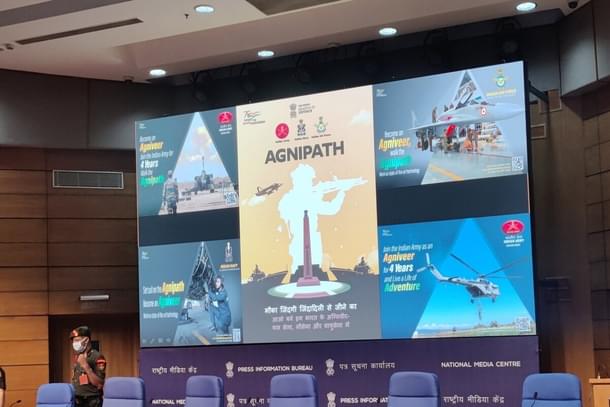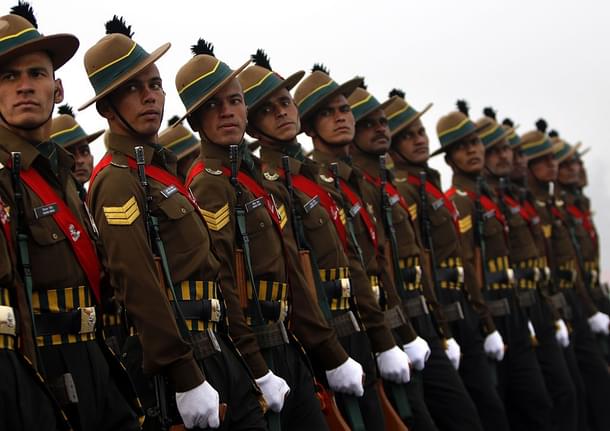Newsletters
Agnipath Passes Agnipariksha
Swarajya Staff
Jun 17, 2022, 07:02 PM | Updated Jul 02, 2022, 02:45 PM IST
Save & read from anywhere!
Bookmark stories for easy access on any device or the Swarajya app.


The military's Agnipath recruitment scheme, which had been in the making for over two years, has finally been launched.

The main aim of the Agnipath scheme is to prevent the pensions budget of the military from ballooning further.
Pensions make up almost a quarter of the country's defence budget.
The burgeoning defence pension budget is the main reason behind the meagre modernisation spending.
The share of pension in the defence budget was at 19 per cent in 2012-13 and grew to 26 per cent in 2019-20.
The result is that the budget allocation for capital expenditure falls short of resource projection by the armed forces year after year.
Unsurprisingly, the scheme attracted reproval and censure from the usual quarters as soon as it was announced.

But what was surprising, was the number of senior, retired military officers who publicly inveighed against this new policy, the vehemence of their fulminations and the poor quality of their arguments.
One retired Army officer said that the scheme would be unjust to new recruits and length of service ought to be increased.
A second said that the policy was flawed because it left youngsters at the start of their adulthood without further avenues.
However, Agnipath is far from being unjust to recruits.

The soldiers who exit after four years would get a certificate for their skills and credits, which could be used for further education.
Along with the Rs 11.7 lakh tax-free 'Seva Nidhi' and the experience of serving in the armed forces, this would put these soldiers ahead of many of their peers across the country.
They will have good prospects of a new job, including priority in paramilitary forces and other government departments.
The scheme would bring multiple benefits to the armed forces.

Over a period of time, the spending on pensions would go down, and the military will have more to spend on modernisation.
The youthful profile of the military that the Agnipath scheme offers would make the integration of new technology easier.
At the same time, the military will retain a large chunk of regular soldiers under the new arrangement. Up to 25 per cent of soldiers from each batch will have the option to enrol in the regular cadre.
Agnipath scheme is a balancing act between the interests of past, present and future defence personnel.

If salaries and pension burden for past and present personnel becomes burdensome to exchequer, it will reflect in either slower recruitment or thinned down entitlements for future personnel.
The choice was stark: recruitment with lower benefits or no/low recruitment. Details can be quibbled but not the need of reforms.





